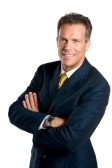
There is no argument that today’s executive is effective to the degree that he or she is able to communicate with other people.
The executive has to be able to speak to other people–one-on-one or one-on-many–in terms other people appreciate, in ways that move and motivate them, and in words and tones that are credible and non-menacing. The “exec” must present himself or herself as a role model, as well as convey the message of the corporation, company, or department.
Some people may be “born speakers,” others may have “learned on the job.” But everyone feels the need to do it better–examine the basics of public speaking and match performance to changes in the audience’s moods, expectations, and markets. Everybody can learn to make a better impression and communicate better. Our results prove it.
For the last dozen years I have been conducting a popular–and powerful–course for the Canadian Management Centre. It is called “Effective Executive Speaking” but I do not present all by myself. Originally I worked with Peter Urs Bender, Canada’s leading public speaker and the author of Secrets of Power Presentations. Peter devised the course and then invited me and George Torok, a dynamic speaker and business consultant, to continue to deliver it. For the last six years, George and I have been holding forth. The three-day course is offered at various times throughout the year. (Customized versions are also delivered on site.) It regularly attracts company founders, presidents, executives, department and division heads, and mid-level managers.
There is an air of excitement when we first meet as a group. George and I review basic principles. Then we divide the group into two and meet in different rooms. Members speak on self-selected topics, assigned subjects, and issues chosen at random. There is immediate, hands-on feedback. Everyone speaks; everyone responds. We offer tips for immediately improvement and insights to ponder. Individual presentations are recorded on video tape for private viewing.
We believe there are two reasons why people enroll in our courses. First, prior to making a presentation, the men and women feel nervous, uncomfortable, child-like, or shy. They want to deal with this residual fear. Second, they realize that, however well they speak, they will have to speak more easily and more persuasively in the future than they have in the past for career advancement. So there is genuine incentive to improve.
“Effective Executive Speaking” has proven to be helpful on both fronts. Do you feel nervous when called upon to speak extemporaneously? Are you spending too much time preparing your presentations? Can you think on your feet? How well do you handle hostile questions? Do you overuse PowerPoint? Is your audience aware of your nervousness? How are you dealing with “the sweats,” thick tongue, beating heart, mental confusion? Do you feel there are more effective ways to present your ideas? How do professional speakers and communicators do it and how can I learn from them?
By the third day, members of the group speak with greater ease and increased confidence and effectiveness. They have learned techniques to use every time they speak. They know what to look for (in themselves and in others) and they know how to improve.
George Torok and I, as co-course leaders, offer general principles and specific practices to teach people the skills necessary to be effective communicators. George has extensive experience as a business consultant. With Peter Urs Bender he wrote Secrets of Power Marketing. My own approach is to recognize and capitalize on individual strengths of body, voice, and mind, and to suggest new and better ways to present information and to motivate listeners.
